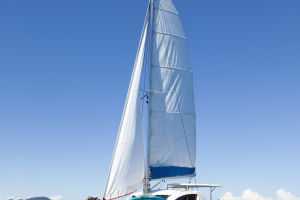The voyage of Magellan around the world marks a significant milestone in maritime exploration. The Portuguese navigator, Magellan, set sail from Santa Roca in 1519 under the order of the King of Spain.
He crossed the Atlantic Ocean, sailed south along the east coast of South America, and eventually reached the strait that separates the South American mainland from Tierra del Fuego, which is now known as the Strait of Magellan. After crossing this strait, Magellan entered the Pacific Ocean and eventually arrived in the Philippines in 1522.
Tragically, Magellan lost his life during an encounter there, but the rest of his crew managed to return to Spain in September of the same year, completing the first-ever circumnavigation of the globe.
In 1569, the Flemish geographer, G. Mercator, invented the cylindrical center projection chart, which revolutionized nautical charting. Mercator's charts are characterized by the ability to connect any two points on the chart with a straight line, representing the line of heading between them.
This line of heading intersects the meridian at a constant angle. By following the set course of the meridian, sailors can navigate from one point to another with minimal error.
Determining longitude at sea has historically posed a significant challenge. Various methods, such as measuring the angular distance between the moon and other celestial bodies, were attempted since the 13th century.
However, these methods required complex mathematical calculations, and even the introduction of J. Napier's logarithmic tables in 1614 did not significantly reduce the workload. Although numerous methods for calculating longitude were developed subsequently, they still relied on observing the angular distance between the moon and celestial bodies.
It was not until the 30-year period between 1735 and 1765 that Englishman J. Harrison developed an astronomical clock suitable for onboard use. The clock underwent further improvements by P. Lepois, leading to the production of an astronomical clock specifically designed for shipboard use in 1825.
This innovation marked a departure from the reliance on measuring the angular distance between the moon and celestial bodies for determining longitude.
The modern maritime industry plays a vital role in the global economy, facilitating regional economic integration and contributing to the stability of development trends. With the rapid advancement of technology and socio-economic progress, the maritime industry continues to evolve.
The integration of information technology and intelligent systems in navigation has significantly reduced the workload of navigation staff. However, this progress has also created a mismatch in the availability of talent equipped with the necessary skills to apply modern automated maritime technologies.
Addressing this challenge requires the development of relevant strategies to ensure the efficient and effective utilization of such technologies, thus promoting further advancements in maritime technology.
Looking ahead, the maritime industry will continue to evolve in line with the trend toward globalization. Shipping companies will increasingly seek resources from global markets and expand their international trade networks.
Transnational cooperation and international coordination will become even more crucial, particularly in areas such as maritime rescue operations. As maritime trade expands, there will be a growing need for effective search and rescue efforts to ensure the safety of crew members and vessels.
Collaborative efforts among nations, coast guards, and maritime organizations will be vital in responding to emergencies and safeguarding human lives.
The maritime industry's future is closely tied to globalization and the increasing interconnectedness of global markets. The development and application of advanced technologies, along with enhanced cooperation and coordination among nations, will drive the industry forward, ensuring safe and efficient maritime operations as well as fostering international trade networks.


